【Black Myth: Wukong】2024 Popular Game Black Myth:Wukong Filming Locations: Shanxi Attractions Tickets & Transportation & Food Guide
Catalogue
- Black Myth Wukong Filming Location 01: Hanging Temple
- Black Myth Wukong Filming Location 02: Yungang Grottoes
- Black Myth Wukong Filming Location 03: Shanhua Monastery
- Black Myth Wukong Filming Location 04: The Yingxian Timber Pagoda
- Black Myth Wukong Filming Location 05: Chongfu Temple
- Black Myth Wukong Filming Location 06: Yuhuang Temple
- Black Myth Wukong Filming Location 07: Qinglian Temple
- Black Myth Wukong Filming Location 08: Xixi Erxian Temple
- Frequently Asked Questions
- 1. What are some recommended foods in Shanxi?
- 2. Besides Shanxi, where else was "Black Myth: Wukong" filmed?
Show More
"Black Myth: Wukong" is a Chinese game that takes the protagonist Sun Wukong from the classic Chinese novel "Journey to the West" and combines modern game technology and design concepts to bring players a brand-new mythological adventure experience. After its official release on August 20, the game saw its peak concurrent online players surpass 2.22 million, ranking second in the historical Steam charts.
According to public information, "Black Myth: Wukong" has over 20 filming locations in Shanxi. Here is a travel guide based on the game's filming locations in Shanxi.
Hanging Temple, suspended on the cliffside of Cuiping Peak on the west side of Jinlong Gorge of Mount Heng in the northern Hengshan Mountain, is renowned for its precariousness. It is a unique cultural heritage that integrates Buddhism, Taoism, and Confucianism. The temple is famous for its all-wooden structure and exquisite architectural design, appearing as if embedded in the cliff, showcasing the wisdom and architectural skills of ancient people. Inside the temple, there are two characters "Spectacular" written by the Tang Dynasty poet Li Bai, which is a must-see for visitors.
【Hanging Temple Tickets】: Full-price tickets include an entrance fee of 15 yuan and a climbing fee of 100 yuan. Half-price tickets include an entrance fee of 8 yuan and a climbing fee of 50 yuan.
【Hanging Temple Transportation】: If you are departing from Datong City, you can choose to take a bus or rent a car. For example, from Datong South Station, you can take bus No. 31 to Beixin Garden Community Station, then transfer to bus No. 20 to the intersection of Yungang Road and Tongquan Road, and then take the express tourist bus No. 603 to Yungang Station, and finally take the shuttle bus from Yungang Station to Hanging Temple.
【Hanging Temple Address】: At the foot of Hengshan Mountain in the southeastern suburb of Wuyuan County, Datong City
【Hanging Temple Opening Hours】: 08:30-17:00
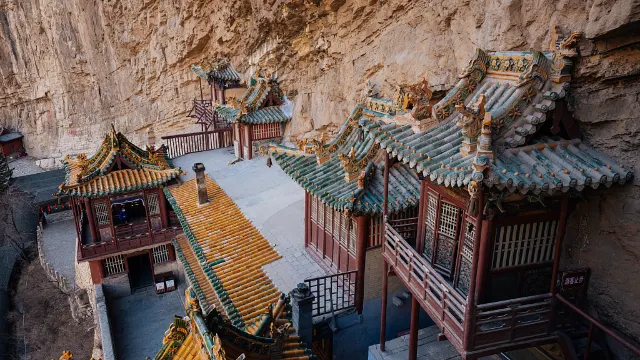
As one of the four major grottoes in China, the statues of Yungang Grottoes from the Northern Wei Dynasty are meticulously recreated in the game. It is recommended to start the tour from the first cave in the east and continue westward to the 45th cave, focusing on the 5th and 6th caves, the Five Huayan Caves (9th-13th caves), and the Five Tanyao Caves (16th-20th caves). The Yungang Grottoes in Datong are not only the pinnacle of Chinese Buddhist art but also represent the highest level of world sculpture art in the 5th century, making it an indispensable site for studying ancient Chinese grotto art.
【Tickets】: Peak Season: 120 yuan per ticket, half-price ticket is 60 yuan. Off-season: 100 yuan per ticket, half-price ticket is 50 yuan.
【Transportation】: If you are departing from Datong South Station, you can take bus No. 31 to Beixin Garden Community Station, then transfer to bus No. 20 to the intersection of Yungang Road and Tongquan Road, and then take the express tourist bus No. 603 to Yungang Station.
【Address】: No. 1, Yungang Town, Yungang District, Datong City, Shanxi Province
【Opening Hours】: 08:00-18:00
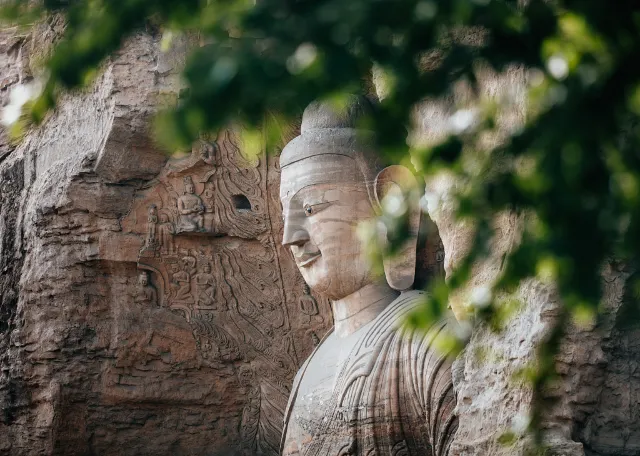
Shanhua Monastery, also known as Nansi, is a cultural heritage site of significant importance in Chinese architectural history. It is located at No. 6 Nansi Street, Datong City. The monastery was initially built during the Kaiyuan period of the Tang Dynasty and was originally named Kaiyuan Temple. It was later renamed Dapuen Temple during the Later Jin of the Five Dynasties. It was destroyed during the Baoda Rebellion at the end of the Liao Dynasty and was rebuilt during the Tianhui period of the Jin Dynasty (1128) and completed in the third year of the Huangtong period (1143). It was renamed Shanhua Monastery in the tenth year of the Zhengtong period of the Ming Dynasty (1445).
【Tickets】: Free
【Transportation】: Datong City is located at the intersection of the Jingbao and Tongpu railways, connected to the Jingda Expressway in the east and the Dayun Expressway in the south, making transportation very convenient. If you are in Datong City, you can easily visit Shanhua Monastery.
【Address】: No. 6 Nansi Street, Datong City (near Loufang Lane)
【Opening Hours】: 08:30-17:00

The Yingxian Timber Pagoda, officially known as the Sakyamuni Pagoda of Fogong Temple, is a fully wooden structure pagoda located in the northwest corner of Yingxian city, Shuozhou city. It is not only the oldest and tallest wooden pagoda in China but also an outstanding representative of wooden structures worldwide, comparable to the Leaning Tower of Pisa in Italy and the Eiffel Tower in France. The pagoda was built in the second year of the Qingning period of the Liao Dynasty (1056 AD) and has a history of nearly a thousand years. The pagoda is 67.31 meters high, with a base diameter of 30.27 meters, and a total weight of about 7,400 tons.
【Tickets】: 50 yuan per ticket
【Transportation】: The route from Taiyuan to the Yingxian Timber Pagoda: Erguang Expressway → G208 → Xishuo Line → Xinjian West Street → Yingbin North Road → West Street → Timber Pagoda Scenic Area.
【Address】: Northwest corner of Ying County, Shuozhou City, Shanxi Province
【Opening Hours】: 08:00-18:00
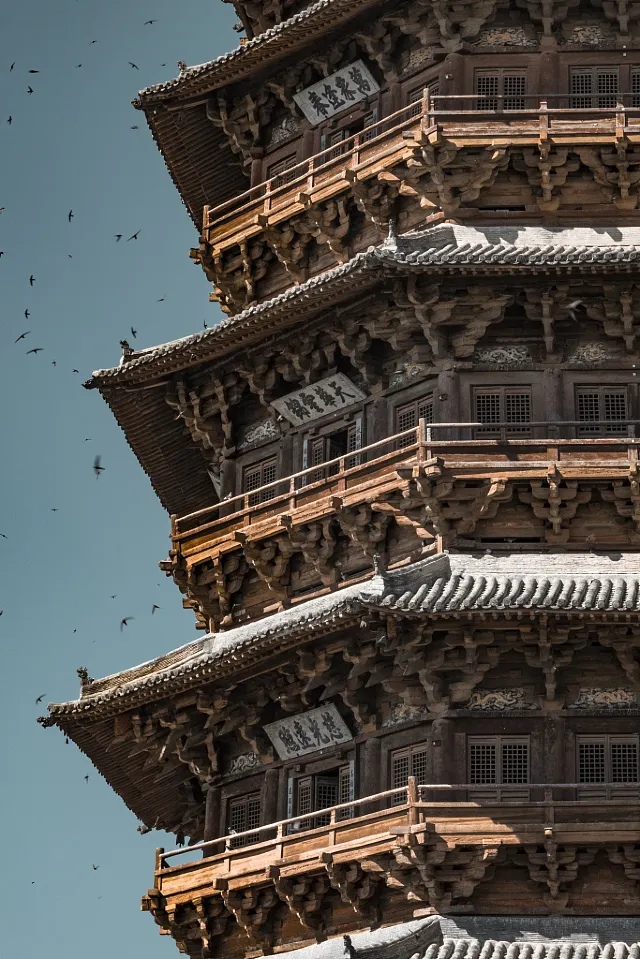
Chongfu Temple, located in Shuocheng District, Shuozhou City, Shanxi Province, is a Buddhist temple with a profound historical background and is one of the three major Liao and Jin Buddhist temples in China. The architecture and murals of Chongfu Temple are well-preserved, with high artistic value and historical significance, making it an important place to understand the Buddhist culture of the Liao and Jin periods.
【Tickets】: Free
【Address】:East St, Shuocheng Qu, Shuozhou Shi, Shanxi Sheng, China
【Opening Hours】: 08:30-17:00
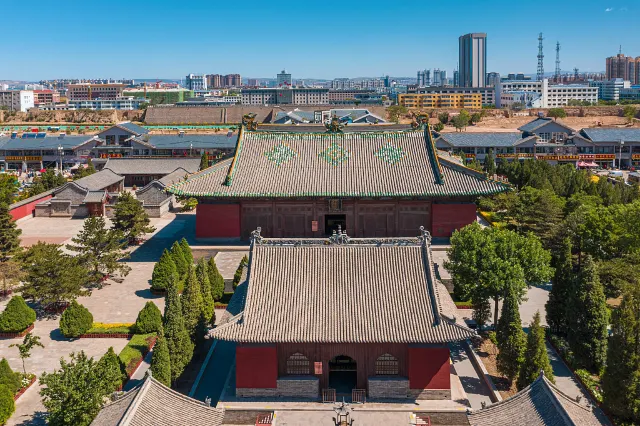
Yuhuang Temple in Jincheng, Shanxi, is a historic Taoist temple known for its rich sculpture art and ancient architecture. The temple was initially built in the ninth year of the Xining period of the Northern Song Dynasty (1076 AD) and has undergone several renovations and expansions throughout history, including significant periods such as the seventh year of the Taihe period of the Jin Dynasty (1207 AD) and the first year of the Zhiyuan period of the Yuan Dynasty (1335 AD).
【Tickets】: Free
【Transportation】: There are long-distance buses to Yuhuang Temple from Jincheng city, costing about 3 yuan. At the Jincheng Transportation Terminal, there are also minibusses to the suburbs, where you can get off at Yushan and then take a minibus at the intersection for about 10 yuan to Yuhuang Temple.
【Address】: North Ridge of Fucheng Village, Jincheng Town, Zezhou County, Jincheng City
【Opening Hours】: All day

Qinglian Temple is a historic Buddhist temple located in Jincheng, Shanxi Province. It was built during the Tianbao period of the Northern Qi Dynasty (550-559 AD) and is a key national cultural relic protection unit. The temple is divided into the ancient Qinglian Temple and the new Qinglian Temple, spreading along the mountain by the Dan River, with the ancient Qinglian Temple at the lower part and the new Qinglian Temple at the upper part.
【Tickets】: 10 yuan per person
【Transportation】: Qinglian Temple is adjacent to Yuhuang Temple.
【Address】: 17 kilometers southeast of Jincheng city
【Opening Hours】: 09:00-17:00
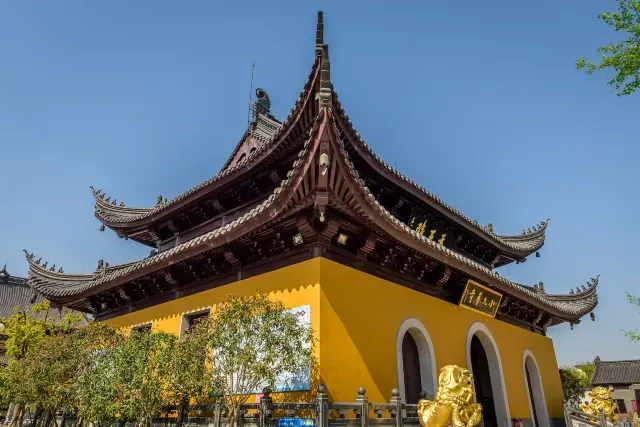
Xixi Erxian Temple, also known as Zhenze Palace, is a Jin Dynasty Taoist temple located in Lingchang Village, Chongwen Town, Lingchuan County, Jincheng City, Shanxi Province. According to inscriptions, the temple was founded during the Qianyuan period of the Tang Dynasty (758-759 AD), was conferred the title "Zhenze Palace" during the Chongning period of the Song Dynasty (1102-1106 AD), and was expanded during the second year of the Huangtong period of the Jin Dynasty (1142 AD). Subsequent dynasties also carried out repairs. The existing rear hall and the east and west dressing buildings are relics of the Jin Dynasty, while most of the other buildings are from the Ming and Qing Dynasties.
【Tickets】: Free
【Transportation】: You can take bus No. 6, 11, 17, 23, 30, or 107 to get there.
【Address】: No. 4, Jingpo Village, Chongwen Town, Lingchuan County, Jincheng City, Shanxi Province
【Opening Hours】: All day

Knife-cut noodles, Shanxi fried pork, Pingyao beef, Shanxi aged vinegar, Taigu cake, Hunyuan cold noodles, Bazhen decoction, Shanxi bubble oil cake, sweet and sour fish
"Black Myth: Wukong" has filming locations in multiple provinces across mainland China, including several popular tourist attractions. These include Shisi Temple in Zhejiang, Guanyinsi in Sichuan, Dazu Stone Carvings in Chongqing, Quanzhou Kaiyuan Temple in Fujian, Panlongmen in Baiyazhai, Anhui, Lingyan Temple in Shandong, Chongsheng Temple Three Towers in Yunnan, Lantianshui Lu'an in Shaanxi, Dule Temple in Tianjin, and Fuqing Temple in Hebei. However, Shanxi has the most filming locations.
Trending Travelogues
Popular Travel Types
Popular Attractions
Popular Ranked Lists
Popular Destinations
Recommended Attractions at Popular Destinations









Site Operator: Trip.com Travel Singapore Pte. Ltd.




